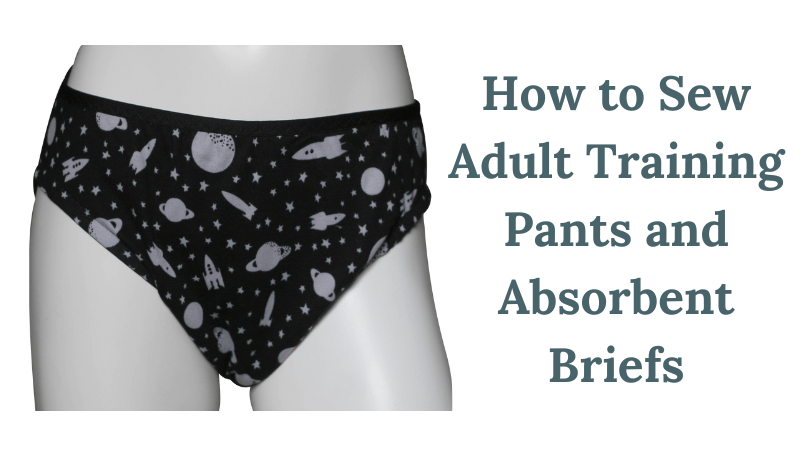While adult training pants and absorbent briefs serve different purposes, the way they are sewn is similar. Better yet, you don’t need a serger or use complicated stitches to sew a pair of training pants or absorbent briefs to meet your needs for incontinence protection. This straight-forward method of sewing incontinence underwear can also be used to make an absorbent diaper as well.
Related content: Adult Training Pants vs. Pull Up vs. Pull On Diaper
How to Make Adult Training Pants and Absorbent Briefs – Supplies
Fabric
Training pants
Stretch fabric – since training pants are meant to pull up and down like regular underwear, choosing a soft fabric with stretch is necessary. While the outer layer can be any type of stretchy fabric, the fabric next to skin should be a natural fiber or stay-dry option.
Fabrics with spandex are a sure bet, but regular cotton interlock with a 2-way stretch across the grain also works well. You could also use bamboo or a modal jersey. Just make sure that the stretchiest part of the fabric is going around the body.
Absorbent fabric– the type and amount of absorbent material required to sew adult training pants depends on your needs. Leftover cotton jersey, fleece, terry, Zorb, etc all work well.
Waterproof fabric (optional) – For a moisture barrier, waterproof fabric like PUL can be sewn behind the absorbent pad.
Absorbent Briefs
Waterproof fabric – PUL is hands down the most durable and easiest waterproof fabric to sew. Not to mention, it’s readily available in a variety of price points.
Lining fabric – the fabric choice for the lining of the absorbent briefs again depends on your needs and preferences. Cotton is softer next to skin, but tends to feel cold and heavy when wet. A stay-dry fabric like athletic wicking mesh or microfleece can also work well and keep the skin feeling dry.
Absorbent fabric – Like the training pants, any type of absorbent fabric can be used.
Notions
Ballpoint, Jersey, or Stretch needles – PUL is considered a knit fabric and needs to be sewn using a ballpoint, jersey, or stretch needle. And of course, jersey and other stretch fabrics are knits as well.
Knit Elastic -These sewing instructions use knit elastic for the legs. Either ¼” or ⅜” will work. Just note that heavier fabrics work better with a slightly wider elastic. For example, use ¼” for the training pants and ⅜” for the absorbent briefs. For an overview of elastic types, check out Seamworks’ guide.
Fold Over Elastic (FOE) – FOE is a super simple and easy way to finish the waistband of cloth incontinence garments. While it comes in several sizes, 1” tends to work best for waistband applications.
Sewing Machine – while just about anything can be sewn by hand, it’s much less time intensive to use a sewing machine. All you need is a basic machine to sew adult training pants and absorbent briefs.
Pattern – You can make your own pattern by tracing an existing item or use the Training Pants or Absorbent Briefs pattern.
How to Make an Adult Pull Up – Cutting Fabric
Training Pant
Start by cutting out your pattern and fabric. You will need 2 panels of stretchy fabric. Again, to maximize skin health, it’s best to use a natural or stay-dry fabric next to skin.
Cut as many layers as desired for the sewn-in absorbency.
When folding the fabric, only fold it as much as you need to in order to fit the pattern. This will help you get the most out of your fabric, especially on the larger sizes.
Absorbent Brief
Cut one panel from PUL and one from your lining fabric of choice. Next, cut as many layers of absorbent fabric as you desire for the sewn-in absorbency.
How to Sew an Adult Pull Up
Once you have your pieces cut out, it’s time to sew!
Step 1: Sew absorbency
If using multiple layers of fabric for the sewn-in absorbency, you first need to sew those layers together. A simple zigzag stitch around the outside of the layers is the easiest way to finish the absorbency if you don’t have a serger. Don’t worry if it looks a little messy – it’ll be completely hidden inside the garment.
If you are using a lot of layers, it can be helpful to stitch an extra line down the center through all the layers. This helps prevent the layers from shifting when washed.
Step 2:
Center absorbent pad towards the front of the training pant or absorbent brief lining. Stitch down using a straight or zigzag stitch.
Lay the right sides of the outer panel and lining panel together. Pin and stitch along leg openings. For the training pants, you can use a regular straight stitch or a zigzag/stretch stitch for extra flexibility.
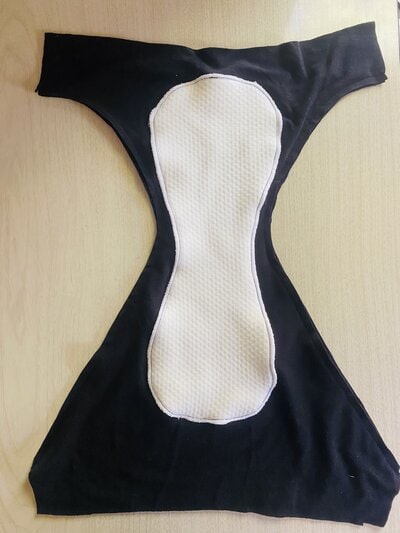
Step 3:
Zigzag stitch elastic along leg seams.
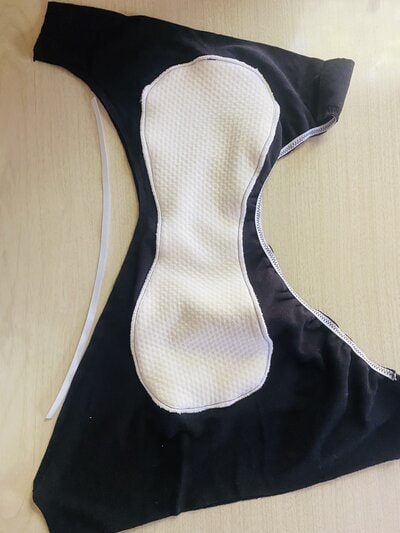
Step 4:
Turn training pant or absorbent brief right side out.
Pin right sides of the side bands together, matching outer front to outer back and lining front to lining back. Stitch.
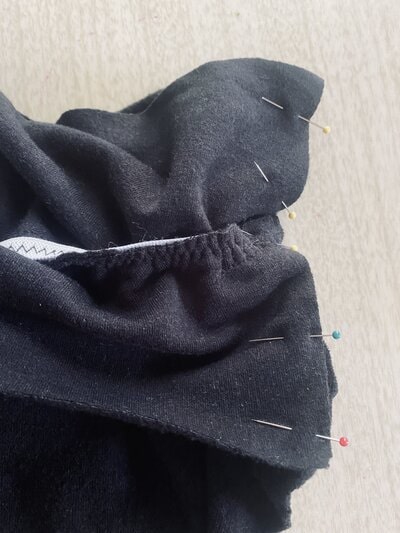
Step 5:
Topstitch around leg openings. Again, for the training pant, you can use a straight stitch or a zigzag/stretch stitch for more flexibility.
Baste along the top of the waistband. Trim any excess fabric.
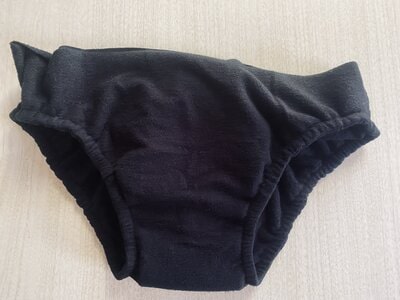
Step 6:
Sewing your FOE into a circle, mark it into quarters.
Mark the training pant or absorbent briefs in quarters along top of the waistband.
Pin FOE to waistband at quarter markings. Using a 3 step zigzag stitch, stitch FOE to waistband, gently stretching to match the waistband of the training pant or absorbent brief. Be careful not to overstretch.
FINISHED!
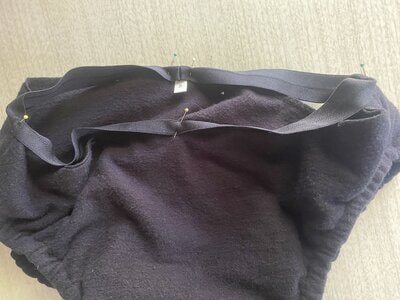
Alecia
Latest posts by Alecia (see all)
- How to Make a Cloth Diaper Bigger - August 21, 2023
- Best Swim Diapers for Adults and Youth - July 18, 2023
- Adult Cloth Diaper Hacks: How to Make a Swim Diaper - July 14, 2023

